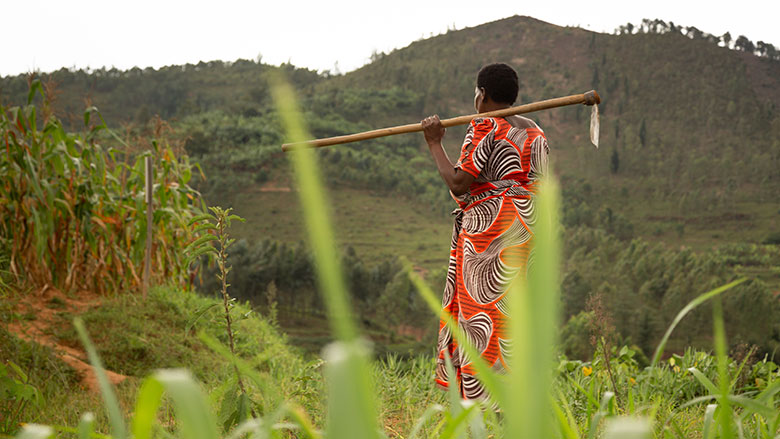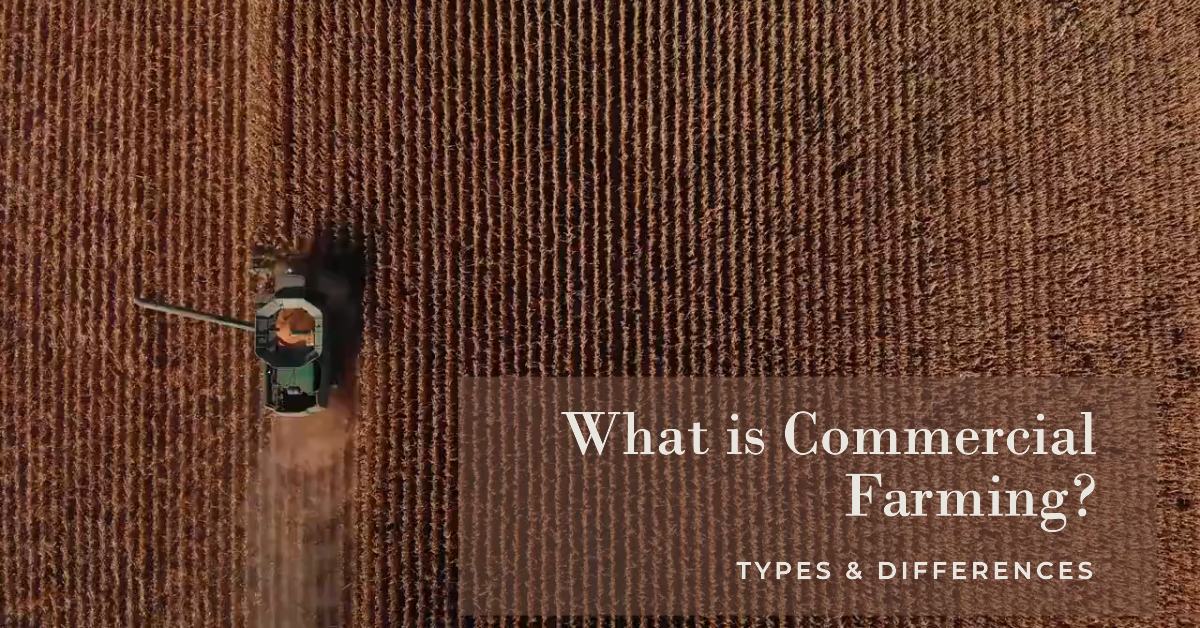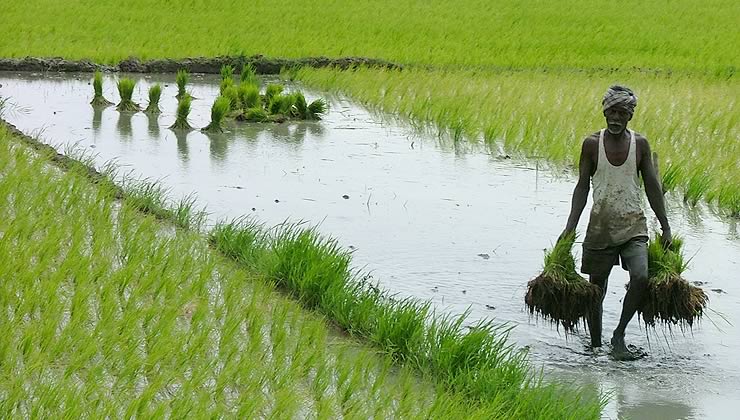The Economic Practicality of Commercial Farming vs Subsistence Farming in Backwoods
The Economic Practicality of Commercial Farming vs Subsistence Farming in Backwoods
Blog Article
A Thorough Consider the Difficulties and Benefits of Modern Agriculture
Modern agriculture stands at the crossroads of technology and sustainability, presenting a plethora of difficulties and chances. With advancements like accuracy farming and biotechnology encouraging improved efficiency, the market simultaneously grapples with crucial issues such as ecological deterioration and socio-economic disparities. As we check out the elaborate equilibrium in between technological development and its broader impacts, the concern occurs: can we accomplish a lasting future that profits both the atmosphere and farming communities? The path onward demands a cautious exam of these dynamics, inviting stakeholders to consider the possibility for transformative change in agricultural practices and policies.
Technological Innovations in Farming
Innovations such as accuracy automation, biotechnology, and farming have actually transformed standard farming techniques, enabling for more sustainable and successful procedures. Precision farming utilizes GPS innovation, sensors, and information analytics to enhance field-level monitoring relating to crop farming.
Automation in farming has actually further pushed the market onward, with the intro of self-governing tractors, drones, and robotics. These technologies minimize labor requirements and enhance functional speed, enabling prompt planting and harvesting. Drones, specifically, provide important airborne imagery and data, assisting farmers in keeping an eye on plant health and finding concerns early.
Biotechnology has additionally played a pivotal function beforehand agricultural practices. Genetically modified organisms (GMOs) have actually been developed to enhance plant resistance to conditions and pests, lower reliance on chemical therapies, and enhance nutritional web content. This modern technology adds to food safety and security and meets the needs of an expanding worldwide population. Collectively, these technological innovations have laid the groundwork for a more sustainable and resistant agricultural future.
Ecological Challenges
Farming deals with numerous environmental difficulties that intimidate its sustainability and performance. The long-term stability of agricultural land is jeopardized, demanding the adoption of even more sustainable techniques.
Water shortage is an additional substantial obstacle, particularly in regions where agriculture greatly depends on irrigation. Environment change is escalating this issue, changing rainfall patterns and raising the regularity of droughts. Effective water administration systems, such as drip watering and rain harvesting, are critical to mitigate these results, but their application stays unequal across various regions.
In addition, farming is both a contributor and a victim to climate modification. It represents a significant share of greenhouse gas exhausts, mainly from animals production and rice farming. Transitioning to low-emission farming practices, such as precision farming and agroforestry, can help in reducing this impact. Nevertheless, these techniques need considerable financial investment and technical competence, positioning an obstacle to prevalent fostering. Dealing with these ecological challenges is essential for guaranteeing a sustainable agricultural future.

Economic Influences
The financial effects of modern-day farming are profound and diverse, affecting both neighborhood and international markets. Advancements in modern technology and manufacturing approaches have substantially enhanced agricultural productivity, leading to extra efficient food supply chains and reduced costs for consumers.
Nevertheless, these benefits are not without difficulties. The capital-intensive nature of contemporary agriculture requires substantial investment in machinery, fertilizers, and genetically changed seeds, which can be financially difficult for small farmers. This usually leads to boosted financial obligation and monetary vulnerability, possibly causing the consolidation of ranches and the loss of country livelihoods. Additionally, worldwide market fluctuations can influence the profitability of farming exports, making economies reliant on agriculture susceptible to financial instability.
In addition, subsidies and profession policies in industrialized countries can distort market rates, impacting competitive equilibrium and possibly disadvantaging farmers in developing nations. In general, while contemporary agriculture drives financial development, it additionally necessitates browsing intricate financial landscapes to ensure lasting and equitable development.
Social Ramifications
While contemporary agriculture has brought around considerable improvements, it likewise provides different social ramifications that call for factor to consider. One major problem is the variation of small farmers because of the rise of big agricultures. As company farming entities increasingly dominate the agricultural landscape, smaller sized farms typically battle to compete, resulting in the erosion of country communities and traditional farming practices. This shift can result in a loss of regional knowledge and cultural heritage that smaller sized farms maintain.

Such techniques could additionally limit customer options and decrease the capability of local areas to manage their food sources. As these social implications unfold, it becomes essential to resolve them to guarantee lasting and equitable farming development.
Future Instructions
Looking in advance, a number of promising opportunities for modern-day agriculture could deal with the obstacles dealt with today while cultivating sustainable growth. Advancements in technology, such as precision farming, supply the potential to maximize source use and rise performance. By using go to the website information analytics and equipment knowing, farmers can make educated choices concerning crop management, causing lowered input costs and minimized environmental influence. The assimilation of renewable power resources into agricultural practices could considerably reduce dependence on fossil fuels and contribute to reduce greenhouse gas emissions.
Biotechnology additionally holds immense pledge for the future of farming. Genetically modified microorganisms (GMOs) and gene editing and enhancing strategies, like CRISPR, can enhance crop resilience versus environment modification, pests, and illness, thus improving food protection. Diversifying plant varieties to include even more nutrient-dense and climate-resilient alternatives can bolster both environmental stability and human nourishment.

Verdict
Modern farming, identified by technological advancements, presents both difficulties and chances. commercial farming vs subsistence farming. Addressing these intricacies needs a change towards lasting practices that balance efficiency with ecological stewardship and social equity, thus guaranteeing a resilient future for worldwide agricultural systems.
Modern farming stands at the crossroads of advancement and sustainability, providing a plethora of possibilities and obstacles. Additionally, international market variations can impact the success of agricultural exports, making economic situations reliant on agriculture susceptible to financial instability.
In addition, the intensive usage of innovation and mechanization in farming has led to a click this link decrease in agricultural employment opportunities.Looking ahead, numerous promising methods for modern agriculture might deal with the challenges dealt with today while fostering sustainable development. commercial farming vs subsistence farming.Modern agriculture, characterized by technical advancements, presents both opportunities and challenges
Report this page